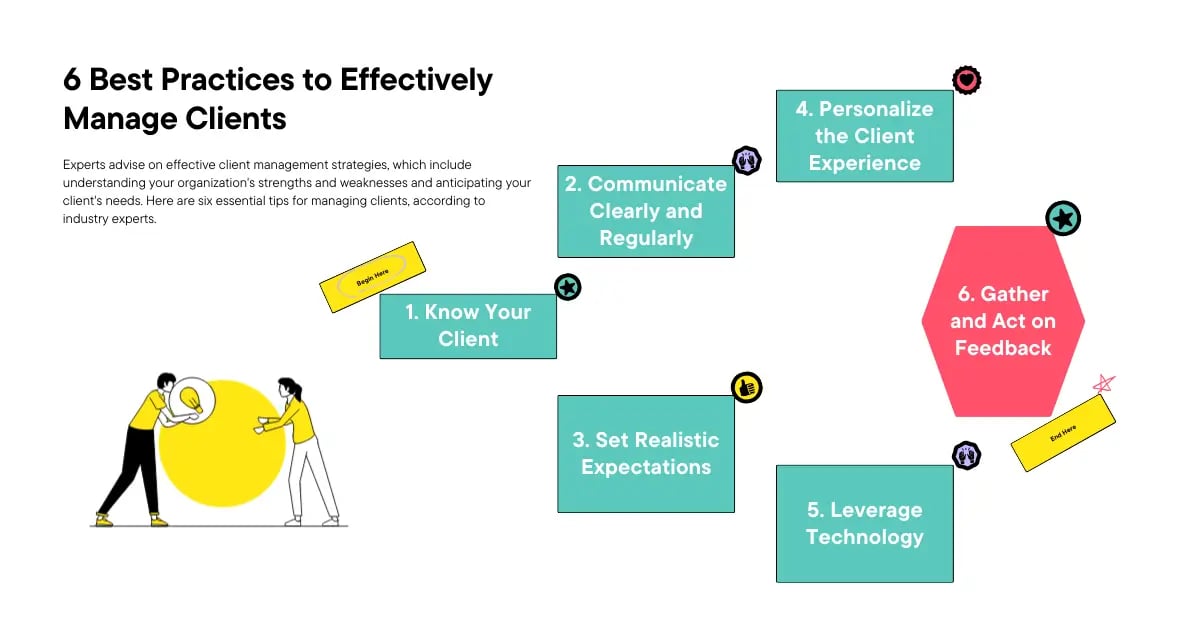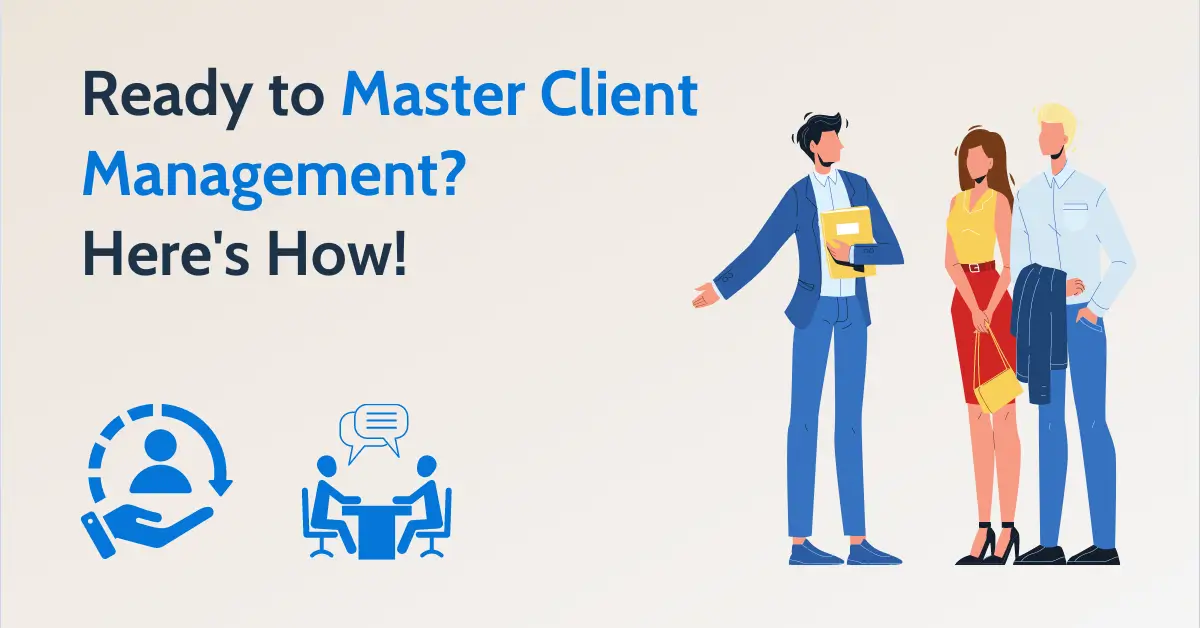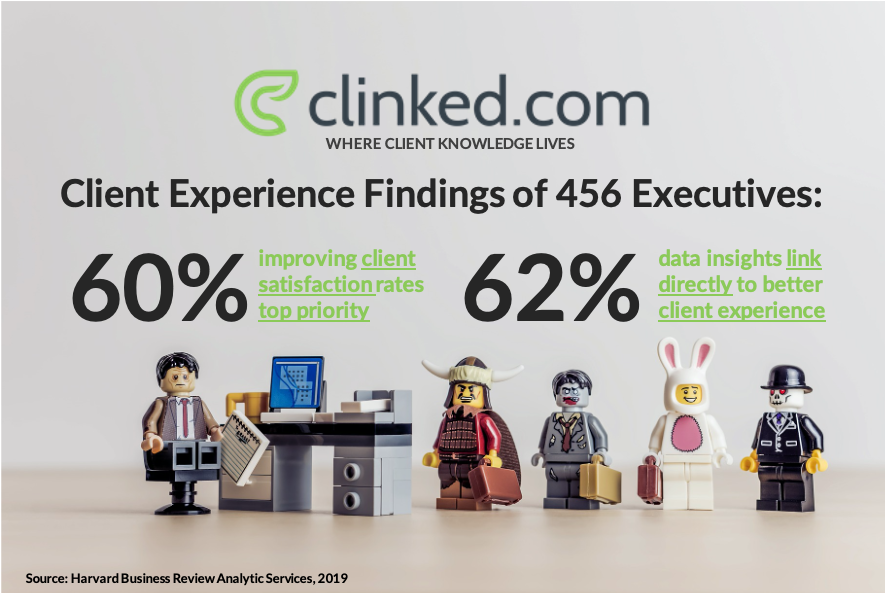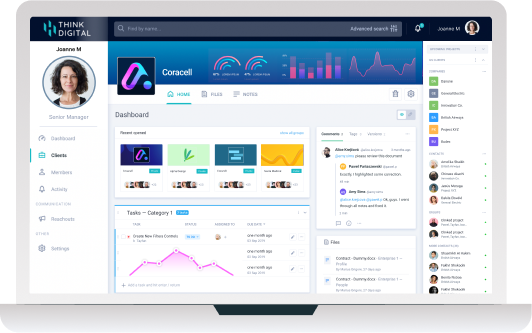Imagine you're planning a large dinner party, with guests from various parts of your life: work colleagues, childhood friends, and family. Each guest has different tastes, backgrounds, and expectations for the evening. Your task is to ensure everyone feels welcome, engaged, and satisfied with the experience. This scenario mirrors the challenge faced by client managers every day. Just as a thoughtful host intuitively understands and caters to the unique preferences of each guest, effective client management requires a keen awareness of each client's needs and goals. Mastering this delicate balance is crucial for building successful, long-lasting business relationships.
In the following sections, we will explore essential strategies and practical tips to enhance your client management skills. You'll learn how to communicate clearly, set realistic expectations, and use technology to build stronger, more effective relationships with your clients.
Table of Content:
- What is Client Management?
- Practical Examples of Client Management in Action
- 6 Best Practices to Effectively Manage Clients
- Know Your Client
- Communicate Clearly and Regularly
- Set Realistic Expectations
- Personalize the Client Experience
- Leverage Technology
- Gather and Act on Feedback
- Essential Client Management Skills While Facing Clients
- How Client Management Software Can Ease Your Work?
- How Does Using Technology Benefit Clients?
- Closing Remarks: Mastering Client Management Successfully
But before we dive deeper, it's essential to grasp the basics of client management and explore some standout examples of good practices in action.
What is Client Management?
Client management refers to the processes and techniques that businesses employ to ensure positive and productive relationships with their clients. This involves understanding client needs, effectively communicating, managing projects and expectations, and delivering results that align with those needs. Successful client management helps businesses not only retain clients but also grow through referrals and repeated engagements.
Mastering client management goes beyond routine business operations; understanding these dynamics is crucial. It underscores the importance of client management in achieving sustainable growth and success.
Effective client management is essential, not merely advantageous. Statistics reveal that increasing customer retention rates by 5% can boost profits by 25% to 95%. This underlines the significant impact of effective client management on a company's bottom line.
Moreover, a study by Oracle found that 74% of senior executives believe that customer experience impacts the willingness of a customer to be a loyal advocate. Therefore, the ability to manage client relationships directly correlates with business success.
Practical Examples of Client Management in Action
Effective client management can manifest in various proactive strategies aimed at enhancing client satisfaction and engagement. Here are some practical examples of how organizations implement client management effectively:
- Regularly reach out to clients to gauge their current needs and expectations. This can involve informal discussions where clients share their immediate requirements and future desires from a service provider in your sector.
- Create personalized client reports that update them on project progress and key metrics. These reports can be tailored to the specific interests and needs of each client, ensuring they feel valued and well-informed.
- Implement structured client satisfaction surveys following the conclusion of a project to gather detailed feedback.
- Organize debriefing sessions with clients and your team's leaders to review project outcomes and identify areas for improvement.
- Employ client relationship management (CRM) tools to maintain regular contact, especially with clients who have been less active in recent communications.
- Establish a client advisory board that includes key clients to gather insights and suggestions on your services and innovation efforts. This board can provide valuable feedback and foster a deeper engagement with your most influential clients.
6 Best Practices to Effectively Manage Clients
Professionals recommend effective strategies for client management, spanning from comprehending your organization's strengths and weaknesses to predicting your client's requirements. Here's six essential tips for effectively managing clients, as recommended by experts in the field.

1. Know Your Client
Understanding your client's business, the challenges they face, and their industry trends are the first steps in effective client management. This requires thorough research and regular interaction to keep your information up-to-date. A well-informed manager is best positioned to anticipate client needs and tailor services accordingly.
At a digital marketing firm, for instance, client managers conduct monthly reviews of clients' industry performance, analyzing competitor activities and market trends to offer customized marketing strategies that precisely address each client’s unique challenges and opportunities.
How do businesses get to know their clients better?
- Conduct thorough research on the client's industry, including market trends, competitor analysis, and emerging challenges.
- Regularly interact with clients through meetings, calls, and emails to understand their business goals, preferences, and pain points.
- Utilize customer relationship management (CRM) software to track client interactions, preferences, and previous engagements, or implement a client portal to streamline communication and collaboration.
- Implement client surveys or feedback sessions to gather insights into client satisfaction and areas for improvement.
- Assign dedicated client managers or account executives responsible for building and maintaining client relationships.
2. Communicate Clearly and Regularly
Communication is the cornerstone of any successful client relationship. Regular updates, clear timelines, and open channels of communication build trust and prevent misunderstandings. Businesses can benefit from utilizing multiple communication channels, such as email, phone calls, and video conferences, to ensure accessibility and responsiveness to client needs. Additionally, making use of a client portal can centralize all information in one place, fostering better collaboration and transparency between businesses and their clients.
For instance, an accounting firm may provide its clients with access to a web portal where they can securely exchange business documents, track project progress, and communicate directly with their accountant. This centralized platform streamlines communication, enhances data security, and strengthens the relationship between the firm and its clients.
Read More: How to Communicate with a Client the Right Way?
3. Set Realistic Expectations
Setting and managing expectations is crucial for long-term satisfaction. Be honest about what your services can deliver and ensure alignment between client expectations and your deliverables. This transparency fosters trust with your clients and mitigates the risk of disappointment.
For example, a software development company may hold a kick-off meeting at the start of a new project to outline deliverables, timelines, and discuss realistic outcomes, aligning client expectations from the outset.
4. Personalize the Client Experience
In a digital age where personal touch can often be lost, personalizing the client experience can set you apart. Tailored advice, remembering small details like client preferences, and celebrating milestones in your client's business can enhance the relationship and client loyalty.
Consider a financial advisor who schedules bi-monthly in-person meetings to cater to a client’s preference, contrasting with more frequent virtual calls, and acknowledges personal milestones like business anniversaries to personalize the relationship further.
5. Leverage Technology
Using technology effectively can streamline client management processes, making them more efficient and scalable. Client management software, such as Clinked, offers tools for task management, real-time communication, and file sharing, all of which can improve the client experience and free up your time to focus on relationship building.

A consulting firm might create a shared workspace for each client using client management software, allowing efficient document sharing, task tracking, and real-time updates to keep both parties informed throughout the project.
Which technologies should be prioritized to enhance client management?
Here's how businesses can leverage technology to enhance client management:
- Customer Relationship Management (CRM) software: CRM systems allow client managers to organize, track, and manage interactions with clients, including contact information, communication history, and sales opportunities.
- Client Onboarding Software: This technology streamlines the onboarding process for new clients, automating tasks such as document collection, account setup, and welcome communications to ensure a smooth transition into the client relationship.
- Client Portals: Client portals provide a secure online platform where clients can access relevant documents, track project progress, communicate with their account manager, and collaborate on tasks, fostering transparency and efficiency in client interactions.
- Marketing Automation Tools: These tools enable client managers to automate marketing campaigns, personalize communications, and track client engagement metrics, allowing for targeted and effective client outreach.
- Project Management Software: Project management tools help client-facing teams organize and track project tasks, timelines, and deliverables, ensuring projects are completed on time and within budget while keeping clients informed of progress.
- Communication Platforms: Utilizing communication platforms such as email, video conferencing, and messaging apps allows client managers to maintain regular contact with clients, address inquiries promptly, and facilitate seamless collaboration.
6. Gather and Act on Feedback
Regularly solicit feedback from your clients on your services and their experience working with you. This not only demonstrates that you value their opinion but also provides crucial insights into how you can improve your offerings. Act on this feedback to continually refine your approach to client management.
After completing a project, a project manager sends out a detailed feedback form to gauge the client's satisfaction, seeking insights on what went well and what could be improved. The collected feedback is then discussed in team meetings to drive service enhancements.
Essential Client Management Skills While Facing Clients
Effective client management demands a diverse skill set. Here's a breakdown of essential competencies to elevate your client-facing prowess:
- Thorough Product or Service Understanding: Cultivate a profound knowledge of your organization's offerings to confidently address client queries, deliver valuable insights, and provide tailored solutions.
- Outstanding Communication Abilities: Excel in the art of active listening and clear communication to deeply grasp client needs, fostering a sense of trust and collaboration.
- Balanced Realism with Optimism: Engage with clients from a balanced perspective, acknowledging challenges while instilling confidence in your capacity to overcome obstacles and achieve mutual success.
- Proactive Approach to Problem-Solving: Foresee and tackle client challenges swiftly and effectively, showcasing ingenuity and dedication to discovering innovative solutions.
- Innovative Thinking: Embrace creativity and originality to present fresh ideas and distinctive strategies, elevating your services above the ordinary and exceeding client expectations.
- Attention to Detail: Maintain meticulous attention to detail in every aspect of client management, ensuring precision, coherence, and thoroughness in your communications and deliverables.
- Organizational Proficiency: Sustain a well-structured approach to client management, adeptly handling tasks, deadlines, and resources to facilitate seamless project execution and enhance client satisfaction.
- Confident Persuasion: Exhibit assurance and conviction in your proposals and decisions, adeptly persuading clients to place their trust in your expertise and make well-informed decisions for their business.
How Client Management Software Can Ease Your Work?
Client management software is a powerful tool designed to streamline and optimize interactions between businesses and their clients in the digital landscape. This software serves as a centralized platform where businesses can store, manage, and analyze client data, communication history, and project details. It offers a range of features and functionalities aimed at enhancing client relationships, improving communication, and increasing efficiency in client management processes.

Book your demo now to explore our client management software!
Through client management software, businesses can:
- Maintain a comprehensive database of client information, including contact details, preferences, and communication history.
- Track and manage client interactions across various channels, such as email, phone calls, meetings, and social media.
- Schedule appointments, set reminders, and automate follow-up tasks to ensure timely and proactive communication with clients.
- Collaborate internally with team members by sharing client-related information, assigning tasks, and tracking project progress.
- Generate reports and analytics to gain insights into client engagement, satisfaction levels, and areas for improvement.
- Customize client portals to provide clients with secure access to relevant documents, project updates, and communication channels.
- Integrate with other business tools and systems, such as CRM software, project management platforms, and email marketing tools, to streamline workflows and enhance productivity.
Overall, client management software empowers businesses to build stronger client relationships, improve communication efficiency, and ultimately drive business growth in today's digital era.
Looking for effective tools to manage clients? Explore these solutions;
- Salesforce: A leading CRM platform known for its comprehensive features for managing client relationships, sales automation, marketing automation, and customer service.
- Clinked: A client portal software that allows businesses to create secure online portals for collaborating with clients, sharing documents, and managing projects.
- Zapier: An automation tool that connects apps and automates workflows, allowing client-facing teams to streamline repetitive tasks, synchronize data across platforms, and improve efficiency in client management processes.
- Google Workspace: A suite of productivity tools including Gmail, Google Drive, Google Calendar, and Google Meet, which enable seamless communication, collaboration, and document sharing with clients and team members.
- Jotform: A versatile online form builder that enables businesses to create customized forms for various purposes, including client intake forms, feedback surveys, event registrations, and more. Jotform simplifies data collection, automates workflows, and streamlines processes such as client onboarding and feedback gathering.
- Trello: A visual project management tool that uses boards, lists, and cards to organize tasks and collaborate with clients and team members in real time.
- Toggl Track: A time tracking tool that helps businesses monitor and analyze time spent on client projects, improve productivity, and accurately bill clients for their time.
How Does Using Technology Benefit Clients?
Making use of technology on clients' end offers several benefits, including:
- Enhanced Convenience: Technology enables clients to access services, information, and support from anywhere, at any time, using their preferred devices. This convenience improves client satisfaction and loyalty.
- Improved Communication: Digital communication channels such as email, chat, and video conferencing facilitate real-time interaction between clients and businesses, enabling faster response times, clearer communication, and better collaboration.
- Increased Efficiency: Automation tools and online platforms streamline processes, reduce manual tasks, and eliminate paperwork, allowing clients to complete transactions, submit requests, and access resources more efficiently.
- Personalized Experience: Technology enables businesses to collect and analyze client data, preferences, and behavior, allowing for personalized recommendations, targeted marketing campaigns, and customized service delivery that meets individual client needs and preferences.
- Greater Transparency: Client portals, project management tools, and tracking systems provide clients with visibility into project progress, task statuses, and communication history, fostering transparency and trust in the client-business relationship.
- Enhanced Security: Secure online platforms and encryption technologies protect client data, transactions, and communications from unauthorized access, ensuring confidentiality and privacy.
- Access to Resources: Online platforms and digital tools provide clients with access to educational resources, self-service options, and support materials, empowering them to find information, troubleshoot issues, and make informed decisions independently.
Closing Remarks: Mastering Client Management Successfully
Mastering client management requires a blend of empathy, strategic thinking, and the effective use of technology. It's an ongoing process of learning, adapting, and anticipating the needs of those you serve. By implementing these tips and best practices, you ensure that your relationships with clients are not just maintained but nurtured, leading to sustained business growth and mutual success. How will you apply these insights to elevate your client management strategy today?








Let Us Know What You Thought about this Post.
Put your Comment Below.